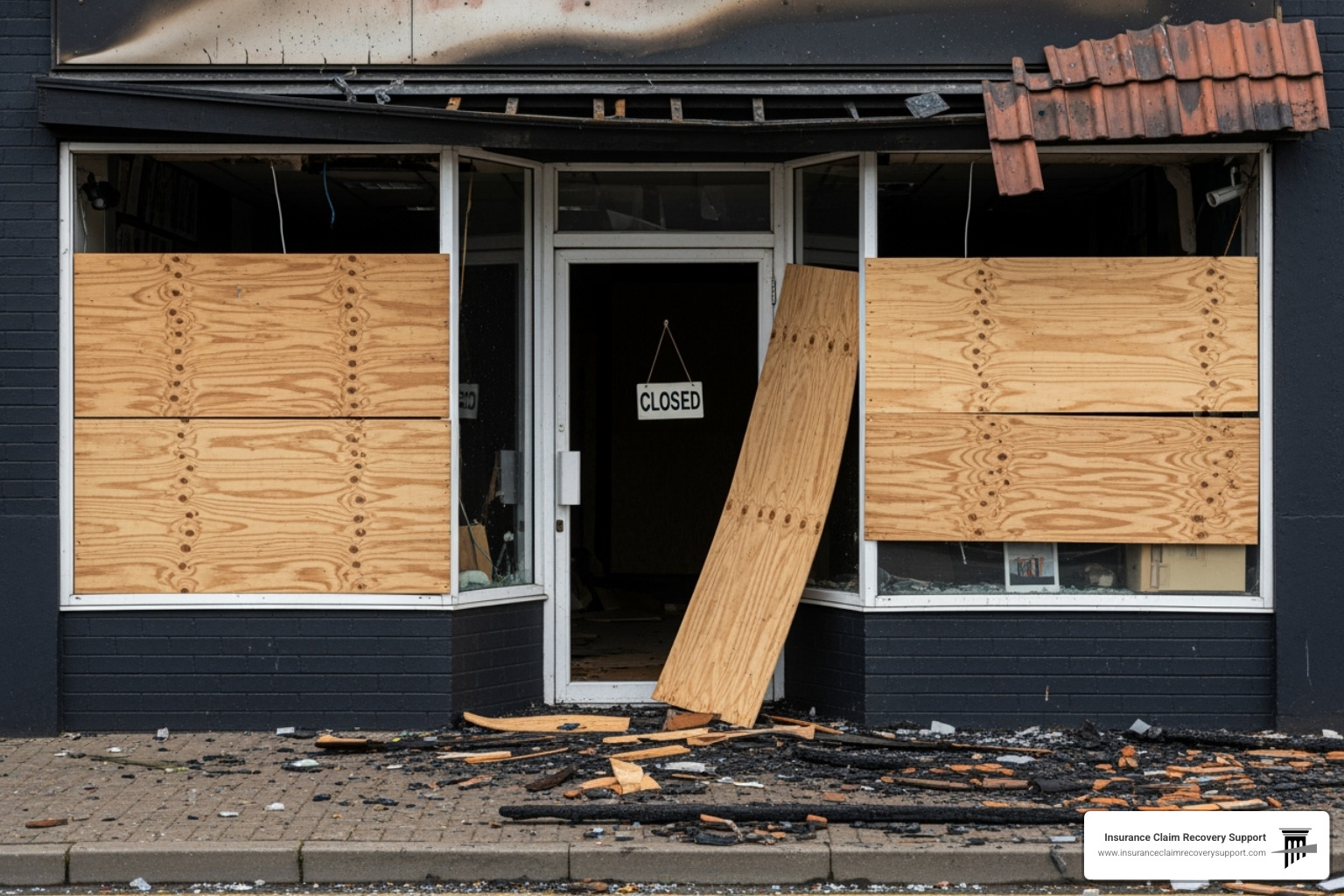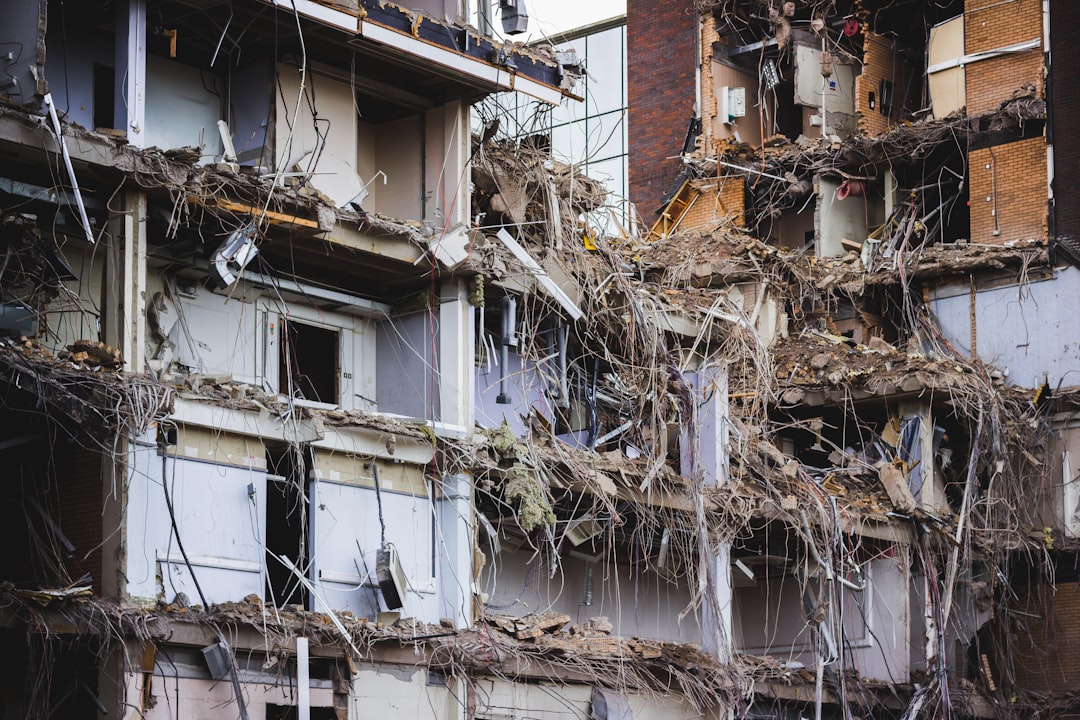Why Wind Damage Insurance Claims Are Important
When a windstorm hits, it can cause significant damage to your property. Knowing how to submit a wind damage insurance claim is crucial for ensuring you receive the compensation you deserve. Here’s a quick rundown of what you need to do:
- Document the damage: Take clear photos and videos from multiple angles.
- Contact your insurance company: Report the damage as soon as possible.
- Make temporary repairs: Prevent further damage but avoid permanent fixes until approved.
- Meet with the adjuster: An insurance adjuster will assess the damage for your claim.
- Finalize the claim: Get repair estimates and select a contractor once your claim is approved.
Wind damage can lead to costly repairs, making it vital to understand your insurance policy and the claims process. I’m Scott Friedson, a multi-state licensed public adjuster. With over 500 large loss claims and more than $250 million in settled claims, I’ve seen how knowing how to submit a wind damage insurance claim can make a huge difference in recovering from a disaster.

Next, let’s dive into understanding your homeowners insurance policy.
Understanding Your Homeowners Insurance Policy
Understanding your homeowners insurance policy is crucial when dealing with wind damage. Knowing what your policy covers, your deductible, and the difference between replacement cost and actual cash value can significantly impact your claim.
Coverage Details
Your homeowners insurance policy typically includes dwelling coverage, which protects the structure of your home, including the roof. This is essential when wind damages your roof or other parts of your home.
However, not all policies are the same. For instance, some might cover the replacement cost of damaged items, while others only cover the actual cash value.
Replacement cost means the insurance company will pay to replace the damaged item with a new one of similar kind and quality. On the other hand, actual cash value accounts for depreciation. So, if a strong wind damages your 10-year-old roof, the payout will be less than what it would cost to install a new roof.
Exclusions
Policies also have exclusions—specific situations or events that are not covered. It’s important to read your policy carefully and understand these exclusions. If you live in a high-risk area, you might need additional coverage.
Deductible
A deductible is the amount you pay out-of-pocket before your insurance kicks in. For example, if your policy has a $1,000 deductible and wind causes $10,000 in damage, you’ll pay the first $1,000, and your insurer will cover the remaining $9,000.
Some policies have separate deductibles for windstorm or hurricane damage, often listed as a percentage of your dwelling coverage. For example, if your home is insured for $250,000 and your windstorm deductible is 2%, you’d need to pay the first $5,000 of windstorm damage.
Replacement Cost vs. Actual Cash Value
Understanding the difference between replacement cost and actual cash value is vital. Replacement cost policies cover the amount needed to replace the damaged item with a new one. Actual cash value policies, however, take depreciation into account, meaning you’ll get the value of the item at the time of loss, not what you paid originally.
For instance, if a windstorm damages your 5-year-old TV, a replacement cost policy will help cover the cost of a new TV. An actual cash value policy will only pay what the TV was worth after five years of depreciation.
Real-life Example
Consider Eric B. from Texas. After a wild thunderstorm in Austin, a neighbor’s large tree limb crashed onto his 1930s bungalow, tearing through several roof beams. His final claim amount was around $15,000, but with a $2,000 deductible, his insurance check was for $13,000. Eric’s experience highlights the importance of understanding your deductible and coverage limits.
Steps to Submit a Wind Damage Insurance Claim
Contact Your Insurance Company
Report the damage promptly. After a storm, contact your insurance company as soon as possible. Time is critical. The quicker you report, the faster you get into the queue for an adjuster and repairs.
Find the right contact info. Look for your insurer’s contact details on your insurance card or their website. Calling the right department speeds up the process.
Detail the damage. Be specific when describing the damage. Mention all affected areas and any immediate concerns.
Document the Damage
Take photos and videos. Use your phone to capture clear images and videos of the damage. Include multiple angles and both the interior and exterior of your home.
Keep receipts. If you make any immediate repairs or purchases to prevent further damage, save all receipts. These might be reimbursed.
Make a detailed list. Write down all damaged items, including brand names, model numbers, and purchase dates. This helps prove the extent of your loss.
Make Temporary Repairs
Prevent further damage. Cover broken windows, patch holes, and secure doors. These temporary fixes can prevent additional problems.
Avoid permanent repairs. Hold off on major repairs until the adjuster has inspected the damage. Permanent repairs before approval might not be covered.
Get insurer approval. Always check with your insurer before making any repairs to ensure they’re covered.
Meet with the Adjuster
Prepare for the visit. The adjuster will assess the damage. Have all your documentation ready: photos, videos, receipts, and lists of damaged items.
Be present. If possible, be there during the adjuster’s visit. You can point out all the damage and answer any questions.
Virtual assessment. Some insurers might offer a virtual assessment. If this is the case, make sure you know how to use the technology and have all your evidence ready to share.
Finalizing the Claim
Approval process. After the adjuster’s visit, your insurer will review the claim. They might ask for additional documentation or clarification.
Get repair estimates. Obtain written estimates from reputable contractors. These estimates should be on the company’s letterhead with their contact information.
Select a contractor. Choose a contractor experienced in handling insurance claims. This ensures they know how to work within your insurer’s requirements.
Payment process. Once your claim is approved, your insurer will issue a payment. This can take 30 to 60 days, depending on the extent of damage and claim volume in your area.
By following these steps, you can steer the wind damage insurance claim process smoothly and efficiently.
Tips for a Successful Wind Damage Insurance Claim
Review Your Insurance Policy
First, review your insurance policy. Understand what it covers, including any exclusions and your deductible. Check if your policy covers wind damage and whether it offers replacement cost or actual cash value. Replacement cost pays for a new item similar to the damaged one, while actual cash value accounts for depreciation.
Assess the Damage
After a storm, inspect your home for damage. Look at the roof, siding, windows, and even the yard. Stay safe; avoid climbing on the roof if it’s dangerous. Document everything with photos and videos. Capture the damage from multiple angles.
Get Repair Estimates
Obtain written estimates from reputable contractors. Make sure these estimates are detailed and on the contractor’s letterhead. This helps you and the insurance adjuster understand the repair costs.
Protect the House From Further Damage
Prevent further damage to your home. Use temporary fixes like tarps to cover leaks. Notify your insurer about these actions. Do not make permanent repairs until your claim is approved.
Avoid Major Repairs Until Claim Approval
While you can make temporary repairs, avoid major work until the adjuster reviews the damage. The claims adjuster needs to see the damage to approve your claim. This ensures you won’t have issues with your insurer later.
Don’t Let the Insurance Company Boss You Around
Insurance companies might try to minimize payouts. You’re entitled to fair treatment. If your claim is large or complicated, consider hiring a public adjuster. They can help ensure you get a fair settlement.
Act Quickly
Time is crucial. File your claim promptly to avoid delays. The longer you wait, the harder it is to prove the damage was from the storm and not wear and tear.
Keep a Log of Correspondence
Maintain detailed records of all communications, including dates, names, and what was discussed. This includes emails, phone calls, and any in-person meetings. Keep photos, receipts, and documents organized. This can be crucial if there are disputes or delays.
By following these tips, you can improve your chances of a successful wind damage insurance claim.
Common Issues and How to Handle Them
When you submit a wind damage insurance claim, several issues can arise. Knowing how to handle these problems can make the process smoother and help you get the compensation you deserve.
Claim Denial
Why might your claim be denied?
- Damage not meeting the deductible: If the repair cost is less than your deductible, the insurance won’t cover it.
- Pre-existing damage: Insurers might claim the damage was there before the storm.
- Failure to maintain the roof: If your roof wasn’t in good shape, they might deny the claim.
How to handle a denial:
- Understand the denial: The insurer will send a letter explaining why they denied your claim.
- Gather documentation: Provide more information or correct any misunderstandings. Photos, videos, and repair estimates can help.
- Appeal the decision: You can appeal the denial. Sometimes, this involves getting a second opinion from another adjuster or a roofing expert.
- Contact your state insurance department: If the appeal doesn’t work, your state’s insurance department can help.
- Consider legal help: If you’re still stuck, an attorney specializing in insurance law can be your ally.
Underpayment
Sometimes, the insurance company offers less than what you believe the repairs will cost. This can happen due to excessive depreciation or outdated price lists.
Steps to handle underpayment:
- Get detailed repair estimates: Obtain written estimates from licensed contractors. Make sure these estimates are on the contractor’s letterhead with contact information.
- Provide documentation: Submit these detailed estimates to your insurer to support your claim.
- Negotiate: Be prepared to negotiate with your insurer. Show them why their offer is insufficient.
- Consider a public adjuster: If negotiation fails, a public adjuster can help. They work on your behalf to get a fair settlement.
Hiring a Public Adjuster
A public adjuster can be a valuable ally, especially for large or complex claims. They represent you, not the insurance company.
Things to consider when hiring a public adjuster:
- Fees: Public adjusters usually charge a percentage of the insurance payout, typically capped at 10% to 12% in some states. In others, there are no caps, or they may charge hourly or flat fees.
- State licensing: Ensure the adjuster is licensed in your state. You can check this on the National Association of Public Insurance Adjusters (NAPIA) website.
- Experience and references: Look for adjusters with several years of experience and ask for references from past clients.
- Reputation: Verify their reputation through the Better Business Bureau or local consumer protection agencies.
By understanding these common issues and knowing how to handle them, you can steer the claim process more effectively. This will help ensure you get the compensation you deserve for your wind damage insurance claim.
Next, we will address some frequently asked questions about wind damage insurance claims.
Frequently Asked Questions about Wind Damage Insurance Claims
Does home insurance cover wind damage?
Yes, most homeowners insurance policies cover wind damage. This includes damage from strong winds, hurricanes, and tornadoes. Dwelling coverage protects the structure of your home, while personal property coverage covers your belongings inside. However, each policy is different, so it’s important to review your specific coverage details. Some policies may have separate windstorm deductibles or exclusions, especially in high-risk areas.
How do I document an insurance claim?
Documenting your insurance claim thoroughly is crucial. Here’s how to do it:
- Take photos and videos of all the damage. Capture close-ups and wide shots.
- List all damaged items with details like brand names, model numbers, and estimated values.
- Keep receipts for any temporary repairs or protective measures you take.
- Write down the storm date and save any news articles about the event as proof.
- Organize your documentation so it’s easy to present to the insurance adjuster.
How long do I have to file a claim for roof damage?
The timeframe to file a claim for roof damage varies by policy and state. Act quickly to avoid delays. Many policies have specific deadlines for filing claims. Promptly notify your insurance company and follow their guidelines. Delaying your claim can complicate the process and may result in denied or reduced compensation. Always check your policy for specific time limits and requirements.
By understanding these FAQs, you’ll be better prepared to steer the wind damage insurance claim process.
Next, we will discuss some additional tips for ensuring a successful wind damage insurance claim.
Conclusion
At Insurance Claim Recovery Support, we understand the stress and challenges that come with filing a wind damage insurance claim. Our mission is to stand by policyholders, ensuring you receive the maximum settlement you deserve.
Our experienced team is dedicated to policyholder advocacy. From the initial contact with your insurer to the final claim approval, we guide you through every step. We believe in fair indemnification, helping you restore and rebuild without undue financial strain.
Maximum Settlement
Securing the maximum settlement is our top priority. We carefully document damage, negotiate with insurers, and ensure that every detail is accounted for. Whether it’s a minor repair or a significant rebuild, we strive to make the process as smooth and stress-free as possible.
Texas Locations
We proudly serve policyholders across Texas, a state known for its severe weather. From Houston to Dallas, our team is ready to assist you with your wind damage insurance claims. Visit our Texas service page to learn more about how we can help you.
Contact Information
If you’re dealing with the aftermath of a storm and need expert assistance, don’t hesitate to reach out. Contact us today for a free consultation or fill out our contact form on our website.
By choosing Insurance Claim Recovery Support, you gain a partner committed to your cause. We’re here to help you steer the complexities of insurance claims and secure the settlement you need to move forward.






